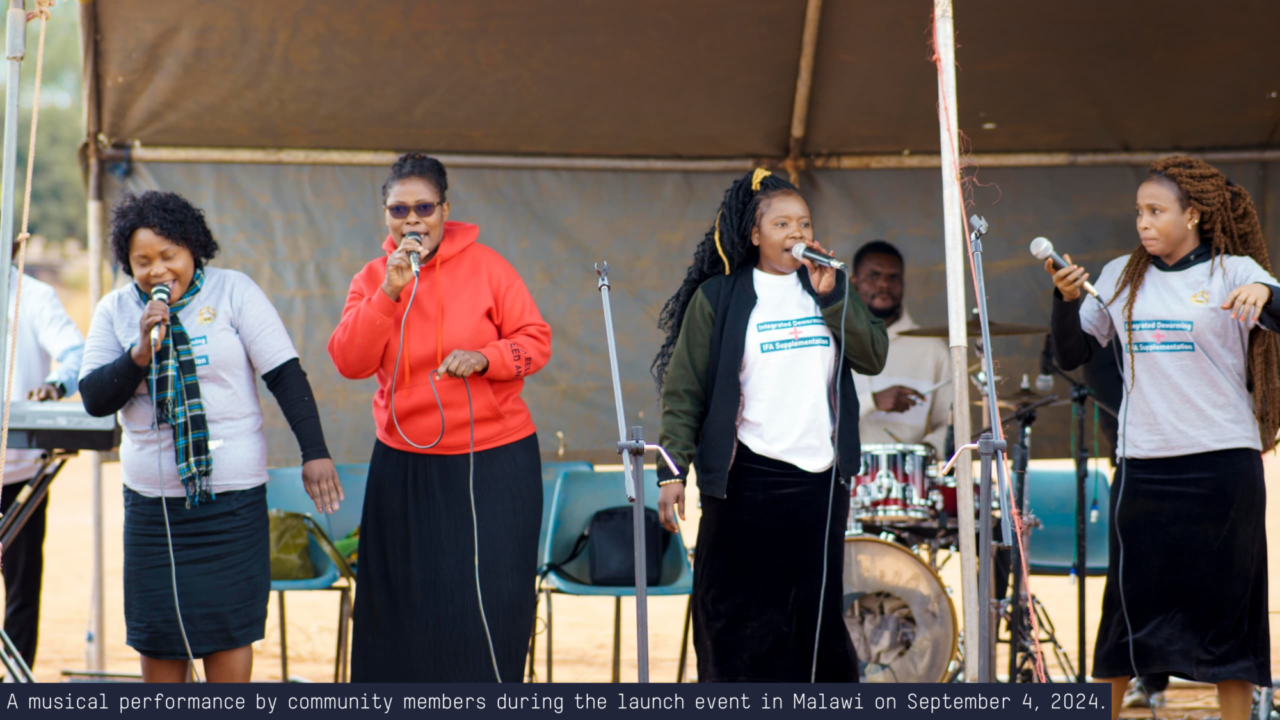This March, our Deworm the World Initiative team in Kenya accomplished an extraordinary feat: they successfully helped the Government of Kenya implement a large-scale school-based deworming wave–which normally takes over two months of planning and coordination–in just three weeks, targeting 2.8 million children.
Since 2012, we have provided technical assistance to the Government of Kenya’s National School-Based Deworming (NSBD) program, which treats over six million children annually for soil-transmitted helminths (STH) and schistosomiasis across 27 counties. Treatment is provided by teachers in school, typically in two waves to reach all targeted counties.
The exception was last year, when only one wave was conducted in 14 counties on March 11, 2020. As the number of COVID-19 cases increased in the country from February to March, the Government of Kenya mandated school closures and implemented social distancing guidance on March 15 – causing the cancellation of a second deworming wave planned for later in the year.
As schools remained closed during 2020, our team in Kenya ensured that planning and preparations for the restart of deworming took place, in anticipation of schools reopening. The team updated all NSBD training and communications materials to ensure alignment with COVID-19 guidelines from the Ministry of Health and Ministry of Education, such as following social distancing measures, implementing a universal mask mandate, and ensuring access to hand sanitizers and/or hand washing facilities.
When the Ministry of Education announced that schools would reopen on January 4, 2021, we were ready to help. However, their guidelines for safe reopening included an adjusted academic timeline and limited extracurricular activities, curtailing the training for teachers that typically happens in the lead up to deworming. Under these restrictions, the next deworming wave was unlikely to happen without significant changes.
Given that many at-risk children had not been dewormed for over a year, prolonged interruption of the program represents a serious problem for their health, education, and wellbeing. There is a robust body of evidence that links regular deworming with significant improvements in nutrition, cognition, school participation, and future earnings. Together with our government partners, our team began to reiterate the benefits of the program to stakeholders at county and sub-county level, and advocate for program modifications that would work within the adjusted timeline. Over several meetings in January and February, Permanent Secretaries in both the ministries of health and education agreed to conduct a wave of the National School-Based Deworming program in 7 of the 27 counties in early March, before schools closed again for Easter break.
This left the program less than three weeks to prepare and implement a large-scale deworming wave, which normally takes over two months. This process involves several core activities, including: planning and implementing training for teachers and government officials; producing and distributing materials to the counties; delivering the drugs to the sub-counties, training facilities, and schools; undertaking community outreach and sensitization campaigns to explain the benefits of deworming, alerting the families of when it shall take place; and conducting administration of deworming medication on the set date at schools.
“Planning for this round proved challenging as we faced uncertainty on whether we were going to be able to obtain sufficient drugs. We also had very short timelines to procure all the training materials and distribute them to the counties, and conduct training and community sensitizations, all while adhering to the Government of Kenya’s COVID-19 regulations, like the universal mask mandate” states Chrispin Owaga, Senior Manager of our Deworm the World Initiative in Kenya.
One of the most difficult challenges the team faced was helping with the procurement of albendazole, the treatment for STH. The program recently transitioned from receiving deworming drugs through the World Health Organization’s donation program to a new model where the government locally sources and purchases the drugs. Under this new model, it usually takes several months to procure and distribute the treatment. We worked closely with the Ministry of Health’s Division of Adolescent and School Health to locally secure 2.8 million tablets of albendazole in less than three weeks, and assisted with quantification and logistics so they would reach the counties in time.
The team also had to pivot several core activities. For instance, the training for teachers and government officials operates under a cascade model: we give guidance to “master trainers” at the county level, who then instruct other trainers at the sub-county level, and so on until it reaches teachers at the school level. To achieve all of this within three weeks, we fast-tracked the training cascade, and the Ministry of Health rapidly mobilized an additional cadre of trainers to reach every sub-county in the targeted counties.
“Some of the lessons we can bring from this experience into the future is that pressure brings out the innovative nature of teams, and coordination from all strategic partners including the national and county stakeholders is extremely important for program success.” comments Owaga.
The deworming wave took place on March 3 and 4, 2021. It was a testament to the strong foundation of the program, built in partnership with national, county, and sub-county governments over the last nine years.
“It was great seeing pupils lining up to receive the tablets and more fascinating were the very young ones who came to school for the first time just for the exercises,” stated Nereah Olick, Kenya’s Director of Primary Education.
Currently, a second wave of treatment is planned for June 2021 which will target approximately 4 million children in 20 counties. Our team is working closely with the government to monitor any potential circumstances, like a rise in COVID-19 cases or availability of drugs, that might require a change to the date of the second wave.


